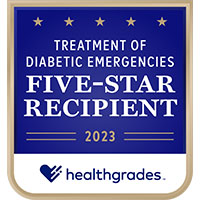All Emergency Room Services
Whether it’s a broken bone, high fever or a more severe medical emergency like a heart attack, we are ready to pro...
Find out what constitutes a medical emergency and when you should visit an emergency room or ER.
Come to our hospital knowing that we do everything possible to keep patients and staff safe.
Saint Vincent Hospital provides helpful emergency health articles and tips to keep you in the know on trending topics, c...
Life Hacks to Prevent Five Common Types of Injuries
Injuries can happen to anyone, whether you’re cooking dinner, running down the stairs, walking in high heels or exercising in the gym. While some preventative measures are intuitive, it can’t hurt to brush up on a few reminders that can avoid unwanted downtime. Take note of a few tips for the most common types of injuries.
Bone and Joint Injuries
1. Practice exercises that can help improve your balance, such as standing on one leg.
2. Stretch to warm up muscles and joints before exercise.
3. Use nonskid mats in potentially slippery areas (i.e., bathroom, poolside, etc.)
4. Secure throw rugs with a nonslip pads.
5. Keep electrical cords hidden where they won’t be a tripping hazard.
6. Keep items off of stairways, such as toys or even laundry that needs to go upstairs.
7. Don’t play through pain in sports.
8. Don’t use a chair for a ladder.
Skin Injuries
9. Install smoke alarms and keep batteries current.
10. Put a fire extinguisher in the kitchen or other areas prone to fire. You can also use baking soda to put out small grease fires.
11. Beware of skin contact with strong chemical products.
Animal-related Injuries
12. Do not pet, hold or feed wild or unfamiliar animals.
13. Wear pants and boots when in areas with snakes or other things that bite.
Electrical Injuries
14. Throw away damaged electrical cords or wires.
15. Do not use malfunctioning electrical appliances.
16. Keep children away from electrical cords or sockets.
17. Keep space heaters at least 3 feet away from anything that can burn (i.e., drapes and newspapers).
Brain Injuries
18. Wear a helmet or protective head gear when riding or using a motorcycle, bike, horse, ski, snowboard or contact sports.
19. Wear your seat belt when driving or riding in a vehicle.
20. Improve your balance to reduce your risk for falls.
Final Notes
While some injuries can be treated using the RICE method (rest, ice, compression and elevation), many of them need immediate care. For instance, dislocated joints and fractures are emergencies, regardless if they’re in your fingers, toes, hips, shoulders or other parts of the body. They’re extremely painful, swollen and noticeably out of place.
Meanwhile, electrical and brain injuries can be life-threatening. Therefore, if you or someone you know experience them, please call 911 immediately. Do not delay care. Your health and safety are our top priorities.
Sources:
Centers for Disease Control and Prevention
MedlinePlus
U.S. Consumer Product Safety Commission

 The Emergency Room (ER) at Saint Vincent Hospital provides you with access to nationally renowned experts in emergency medicine, toxicology, cardiac problems, trauma, and more when you need them most. At the Saint Vincent Hospital Emergency Room, you’ll find:
The Emergency Room (ER) at Saint Vincent Hospital provides you with access to nationally renowned experts in emergency medicine, toxicology, cardiac problems, trauma, and more when you need them most. At the Saint Vincent Hospital Emergency Room, you’ll find: